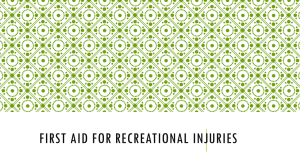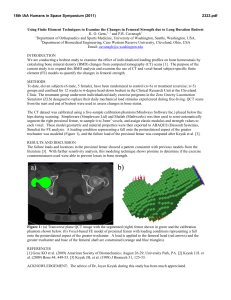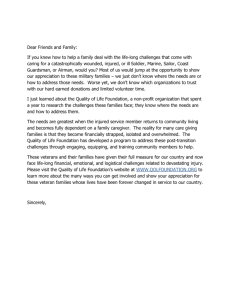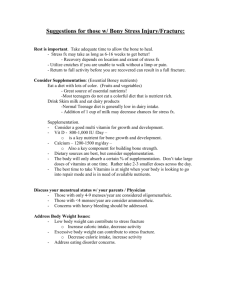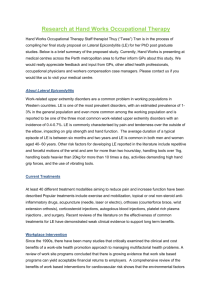Long Bone Cross-Section Geometry of Individuals with Lower Limb
advertisement
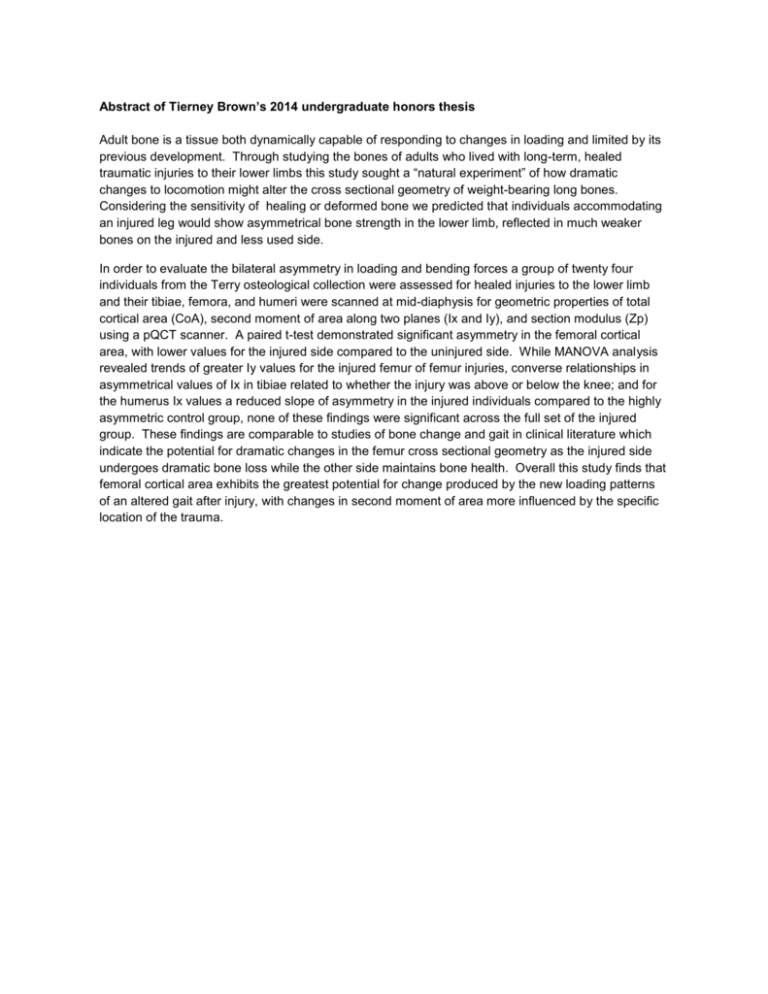
Abstract of Tierney Brown’s 2014 undergraduate honors thesis Adult bone is a tissue both dynamically capable of responding to changes in loading and limited by its previous development. Through studying the bones of adults who lived with long-term, healed traumatic injuries to their lower limbs this study sought a “natural experiment” of how dramatic changes to locomotion might alter the cross sectional geometry of weight-bearing long bones. Considering the sensitivity of healing or deformed bone we predicted that individuals accommodating an injured leg would show asymmetrical bone strength in the lower limb, reflected in much weaker bones on the injured and less used side. In order to evaluate the bilateral asymmetry in loading and bending forces a group of twenty four individuals from the Terry osteological collection were assessed for healed injuries to the lower limb and their tibiae, femora, and humeri were scanned at mid-diaphysis for geometric properties of total cortical area (CoA), second moment of area along two planes (Ix and Iy), and section modulus (Zp) using a pQCT scanner. A paired t-test demonstrated significant asymmetry in the femoral cortical area, with lower values for the injured side compared to the uninjured side. While MANOVA analysis revealed trends of greater Iy values for the injured femur of femur injuries, converse relationships in asymmetrical values of Ix in tibiae related to whether the injury was above or below the knee; and for the humerus Ix values a reduced slope of asymmetry in the injured individuals compared to the highly asymmetric control group, none of these findings were significant across the full set of the injured group. These findings are comparable to studies of bone change and gait in clinical literature which indicate the potential for dramatic changes in the femur cross sectional geometry as the injured side undergoes dramatic bone loss while the other side maintains bone health. Overall this study finds that femoral cortical area exhibits the greatest potential for change produced by the new loading patterns of an altered gait after injury, with changes in second moment of area more influenced by the specific location of the trauma.
